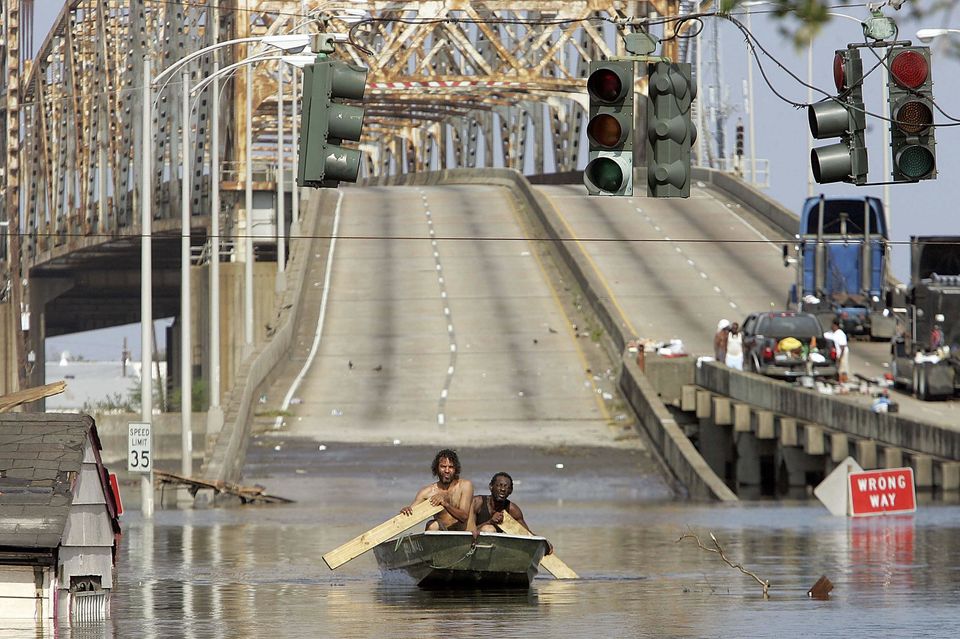"Coming Back: New Orleans Resurgent" (Umbrage, September 7, 2010), documents the worst natural disaster in modern American history and its aftermath of neglect and marginalization. More important, it chronicles the people of New Orleans and the surrounding areas in Louisiana and Mississippi, who refused to submit to the weight of the disaster and the negligence of the governmental apparatus to honor its obligations toward its citizens, and courageously decided to come back home. Getty Images will donate 100 percent of the royalties from the sale of the book to New Schools for New Orleans, a unique non-profit organization dedicated to creating excellent public schools for every child in New Orleans.
Perhaps the might of the New Orleanians has something to do with their history. While New Orleans may be known as the Big Easy, the lives of its inhabitants have often been anything but. They have suffered wars, storms, slavery, epidemics of yellow fever and cholera, fires, riots, segregation, illiteracy, and endemic poverty. Yet from the roots of a scraggly French outpost built near the mouth of the mighty Mississippi has come a remarkable city which has generated America's first indigenous art form, jazz; cuisine admired the world over; magnificent colonial architecture; brilliant literature; and an inimitable multicultural society.
I will never forget the moment I realized I would follow this story as it moved from the despair of ruin to the recovery of everything that New Orleans was before the storm. It was May, 2006, about nine months after the storm, and the city was still devastated. I was searching for signs of a resurgence of pre-Katrina New Orleans, when a kind woman I met suggested that I check out the Original Big 7 Social Aid and Pleasure Club Second Line Parade. She gave me directions to an uncertain location somewhere along Frenchmen Street in the Seventh Ward. I had heard of second line parades only vaguely, but knew that they were somewhat secret affairs, known only to native New Orleanians. Arriving in the Seventh Ward, I spotted people lingering on their front porches and gathering along the street with coolers and grills.
In the distance I heard a beat, and a slowly gathering rhythm, a gaining sound of brass and drums echoing down Frenchmen Street as a crowd materialized seemingly out of thin air. The music echoed through the faded but richly colored shotgun houses, many still marked with the writings of rescue workers who had searched the homes for survivors after the storm. The crowd suddenly exploded onto the streets as the Stooges Brass Band arrived, pounding their drums and blowing their horns in a vibrating, heart-thumping procession. Dancers leapt through the air and slid across the ground as the band improvised, bobbed and weaved its way through what was now an all-out flowing congregation. The Original Big 7 men, in full regalia of white (symbolizing rebirth and baptism) trousers, shirts, top hats and blue sashes around their shoulders, strutted along to the beat waving handkerchiefs and fans made of ostrich feathers. The women in the crowd were decked out in fine garments of outrageous colors. One particular group of sisters stood out from this sea of color with their beautiful red dresses and pink ribbons running through their hair. The resilience of the people of New Orleans had once again risen into the heart of the disaster and delivered its devoir: OVERCOME.
This was indeed the sign of resurgence that I had sought. The crowds that had gathered in the Seventh Ward that day in and around the Original Big 7 Second Line Parade were survivors of Katrina, who had come together in a ceremony of cultural and communal unity as they had done for centuries. The Original Big 7 was not just putting on a show but providing much-needed psychological and emotional solace to some of the most needy New Orleanians who were attempting to rebuild their homes and lives after Katrina. I learned later that second line parades, put on by various social aid and pleasure clubs organized by neighborhood, represent an entire history of economic, social and political empowerment, community solidarity and cultural pride within the African-American communities of New Orleans. The social aid and pleasure clubs provided financial, legal and neighborly assistance to their members, who were unable to access these services from the official administration. I had never seen bonds of community like this on display anywhere in the United States, and to witness it in the heart of post-Katrina New Orleans was nothing short of miraculous. It was like a jazz funeral for Katrina. Her body had been put in the ground and the people were parading on their way back home.
